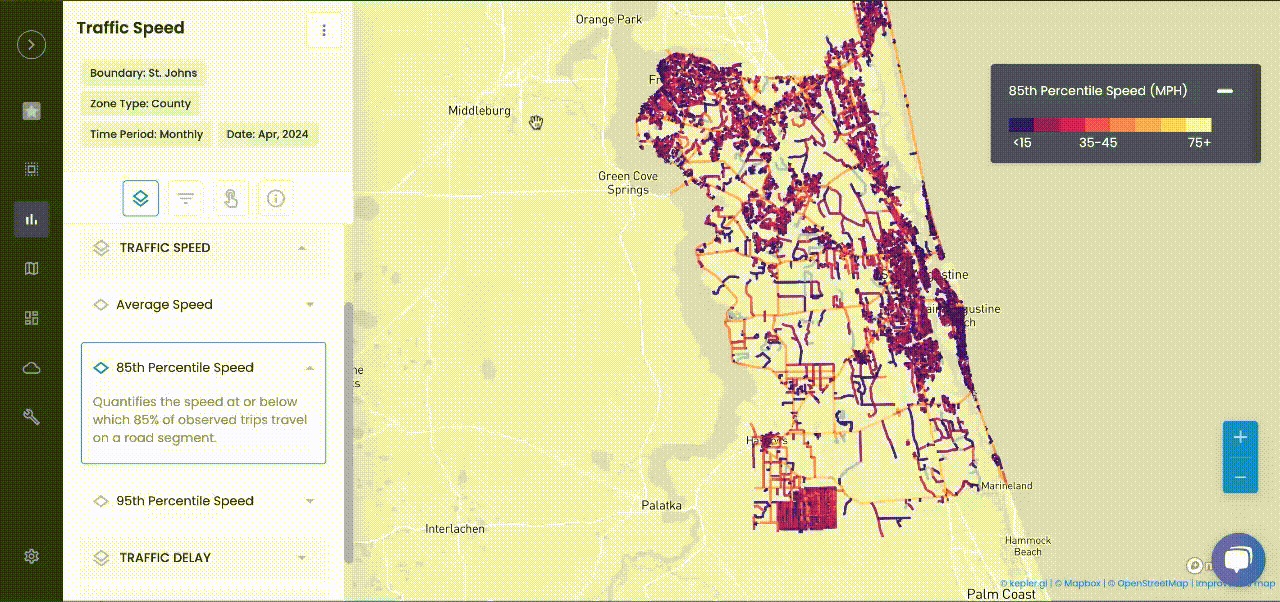
Transportation Planning
The Future of Self-Driving Car Legislation: What to Expect
Learn how agencies can prepare for the next decade of AV regulation
Explore upcoming laws shaping self-driving cars, from national standards and global alignment to safety rules, liability shifts, and transparency demands. Learn how agencies can prepare for the next decade of AV regulation.
When it comes to laws about self-driving cars, or autonomous vehicles, things are changing quickly and they’re set to speed up even more in the next ten years. As the tech gets better, lawmakers are likely to shift from trying out broad concepts to creating specific rules based on performance, safety standards, and even international guidelines. Transportation agencies and city planners really need to keep up with these shifts.
Here are some big trends to keep an eye on:
1. Move Toward National Rules
In the U.S., the jumble of state laws might eventually lead to national standards. The new administration has shown a strong interest in regulating self-driving cars, with bills like the Autonomous Vehicle Acceleration Act of 2025 showing Congress is getting back in the game. Look for proposals that lay out national safety standards, cybersecurity needs, and insurance setups, kind of like what’s happening in Europe.
Urban SDK helps agencies stay on top of these changes by bringing together national and state-level data on one platform. Planners can check how new laws could affect traffic, safety, and compliance where they work.
2. Global Standards and Alignment
On a worldwide level, the UN’s World Forum for Harmonization of Vehicle Regulations is working on global standards for automated driving. The EU and Germany are already making strides with unified frameworks, and other areas like Asia and North America are expected to follow suit. This might involve technical guidelines for sensors, AI checks, and data recorders.
With Urban SDK, agencies can track these regulatory changes while aligning them with local traffic and safety data. Our platform gives the insights needed to match infrastructure planning with upcoming global standards.
3. Tougher Safety Standards
Regulators are shifting to focus on measurable safety outcomes. For example, the UK now requires self-driving cars to match or exceed the safety levels of careful human drivers. Future regulations may include acceptable rates for disengagements, collision limits, regular audits, and required data recorders similar to black boxes.
Urban SDK's collision and road safety data lets agencies measure self-driving car safety against human driver standards. This helps transportation leaders make informed choices about adopting or approving self-driving car programs.
4. Changes in Liability and Insurance
As self-driving cars start hitting the roads, lawmakers are redefining liability and insurance rules. Expect clearer definitions of "operators" and "users in charge," along with a shift to manufacturer responsibility in certain cases. New insurance models might pop up, like manufacturer coverage for robo-taxis, plus shared compensation funds for crashes.
Urban SDK’s predictive models help agencies simulate how liability and insurance changes will impact traffic safety, fleet use, and risk levels, making sure policymakers are aware of the knock-on effects of any regulatory changes.
5. Demand for Transparency
People are asking for more openness, pushing governments to require disclosure of self-driving car testing and performance data. Bills like the U.S. AV Safety Data Act could make it necessary to report on miles driven, crash numbers, and software issues.
Urban SDK helps agencies through this shift by aggregating and anonymizing traffic and crash data for compliance and public trust. By providing easy-to-use reporting tools, the platform lets cities assess self-driving car programs confidently.
6. Tying into Bigger Policy Goals
Self-driving car laws won’t stand alone. Policymakers will link them with climate, safety, and urban mobility objectives. Cities might require electric or carbon-neutral self-driving car fleets, introduce congestion pricing, or ensure self-driving car access in underserved areas.
Urban SDK backs this wider vision by offering tools that model how self-driving car adoption will affect emissions, congestion, and equity. With predictive analysis, planners can make sure self-driving cars boost rather than hinder long-term sustainability and mobility goals.
Looking Ahead
The road ahead for self-driving car regulations is shifting from allowing free testing to demanding accountability and public value. Transportation agencies that get proactive about these changes will be in the best spot to succeed.
Urban SDK has what you need to stay ahead. From accurate and validated traffic insights to predictive safety modeling and compliance tracking, our platform helps city planners and policymakers navigate the fast-changing self-driving car landscape with confidence.
By blending global regulatory watch with local data integration, Urban SDK empowers decision-makers to create forward-thinking, data-driven mobility policies that could lead to a safer and smarter transportation future.
FAQs: The Future of Self-Driving Car Legislation
Q1. Will the U.S. set national standards for autonomous vehicles?
Ans: Yes, there is growing momentum for nation-wide rules around self-driving cars. In 2025, the U.S. Congress is advancing bills like the Autonomous Vehicle Acceleration Act, which aims to establish unified safety, cybersecurity, and insurance standards, similar to what is happening in Europe and Asia.
Q2. How are global standards shaping self-driving car regulation?
Ans: The United Nations and the EU are rapidly aligning technical and safety frameworks for AVs. Countries like Germany, South Korea, and Japan are enacting legislation for Level 3 and 4 AVs, promoting best practices that U.S. regulators are monitoring closely.
Q3. What new safety standards are regulators introducing?
Ans: Governments are shifting to performance-based rules, including requirements for self-driving cars to match or exceed careful human driving, set acceptable disengagement rates, and install vehicle “black boxes” for incident auditing. Ongoing software and sensor checks are also being required.
Q4. How is liability and insurance changing for autonomous vehicles?
Ans: As AVs roll out, responsibility is shifting from drivers to manufacturers or fleet operators, especially for commercial AVs and robotaxis. Innovative models like shared compensation funds, manufacturer-backed insurance, and new definitions of “operators” are being piloted in the U.S. and globally.
Q5. What is driving the push for transparency in AV testing and operation?
Ans: Demand for public reporting of autonomous vehicle data is rising. Governments are considering or enacting laws requiring disclosure of test miles, software failures, and crash numbers to ensure accountability and build public trust.
Q6. Are autonomous vehicle laws being tied to bigger policy goals?
Ans: Yes. Policymakers increasingly require electric and low-emission AV fleets, integration with congestion pricing, and equitable access to self-driving services in underserved areas, linking AV adoption to environmental and mobility objectives.
Q7. How fast is autonomous vehicle adoption growing in the U.S.?
Ans: Robotaxis and commercial Level 3+ AV pilots are active in states like California, Texas, Arizona, and Georgia. In 2025, Level 2 and 3 vehicles are projected to account for nearly two-thirds of new car sales, but fully driverless systems remain limited to select urban environments.
Q8. What role does technology play in future legislation?
Ans: Legislation is advancing innovations such as V2X communication, blockchain for data integrity and insurance, higher-resolution sensors, and AI for predictive road safety - all integral to future vehicle standards.
Q9. Will legal frameworks allow vehicles without traditional controls?
Ans: Yes, the NHTSA and other regulators are issuing exemptions and updating safety standards to permit AV designs that may lack steering wheels or pedals, provided they meet proven safety criteria.
Q10. What should city and transportation planners focus on next?Ans: Planners should monitor changes in global and domestic legislation, invest in data integration platforms, anticipate new insurance and safety requirements, and align AV strategy with sustainability and equity goals for their communities.

TRAFFIC ENFORCEMENT FEATURES
80% of citizen complaints
are a perception problem
Urban SDK provides precise hourly speed data to evaluate complaints and deploy resources efficiently for the greatest impact to public safety.
Urban SDK provides precise hourly speed data to evaluate complaints and deploy resources efficiently for the greatest impact to public safety.
Target Speeding
Identify hot spots, validate monthly speeding trends and monitor vulnerable areas like school zones.
Improve Safety
Crash and citations location information to compare speed trends month over month
Fast Response
Respond to citizen complaints sooner with address search and exportable reporting
Deploy Assets
Generate maps for traffic enforcement by time of day, location or division to deploy officers to known problem areas.
RESOURCES
Customer Success
See how public sector leaders succeed with Urban SDK.
WEBINAR
Identify speeding and proactively enforce issues
See just how quick and easy it is to identify speeding, address complaints, and deploy officers.







